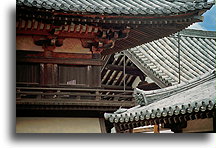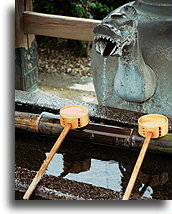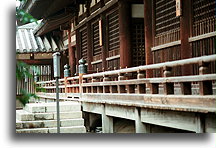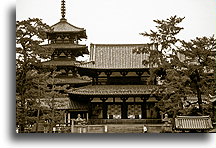
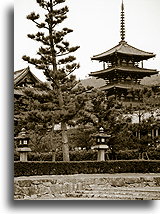
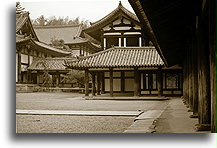
Horyu-ji (“Temple of the Flouring Law [of Buddhism]”), the most celebrated temple in Japan, was dedicated to Yakushi, Buddha of Healing. Prince Shotoku, the great founder of Buddhism in Japan, founded it in 607. Four of the buildings from the complex have survived for over 1,300 years and are the oldest wooden structures in the world: the Main Hall (Kondo), five-story Pagoda (Goju-no-To), Central Gate (Chumon) and Cloister Gallery (Kairo). In fact, Horyu-ji contains more than 2,000 important treasures. This temple is regarded as birthplace of Buddhism in Japan.
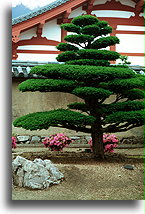
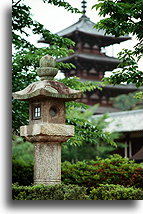
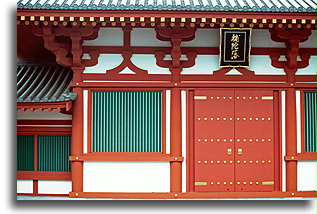
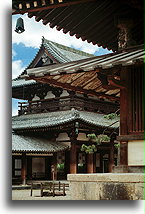
The font is usually located at the entrance to the temple. It is important for followers of Buddha to rinse hands and mouth before entering the sacred precinct. They cleanse themselves this way.
